The creation of Tom Stuart-Smith's showstopping garden at RHS Chelsea 2024
Tom Stuart-Smith returned to Main Avenue at the RHS Chelsea Flower Show 2024 with a hazel grove for the National Garden Scheme. Joanna Fortnam took an exclusive look behind the scenes at its creation.

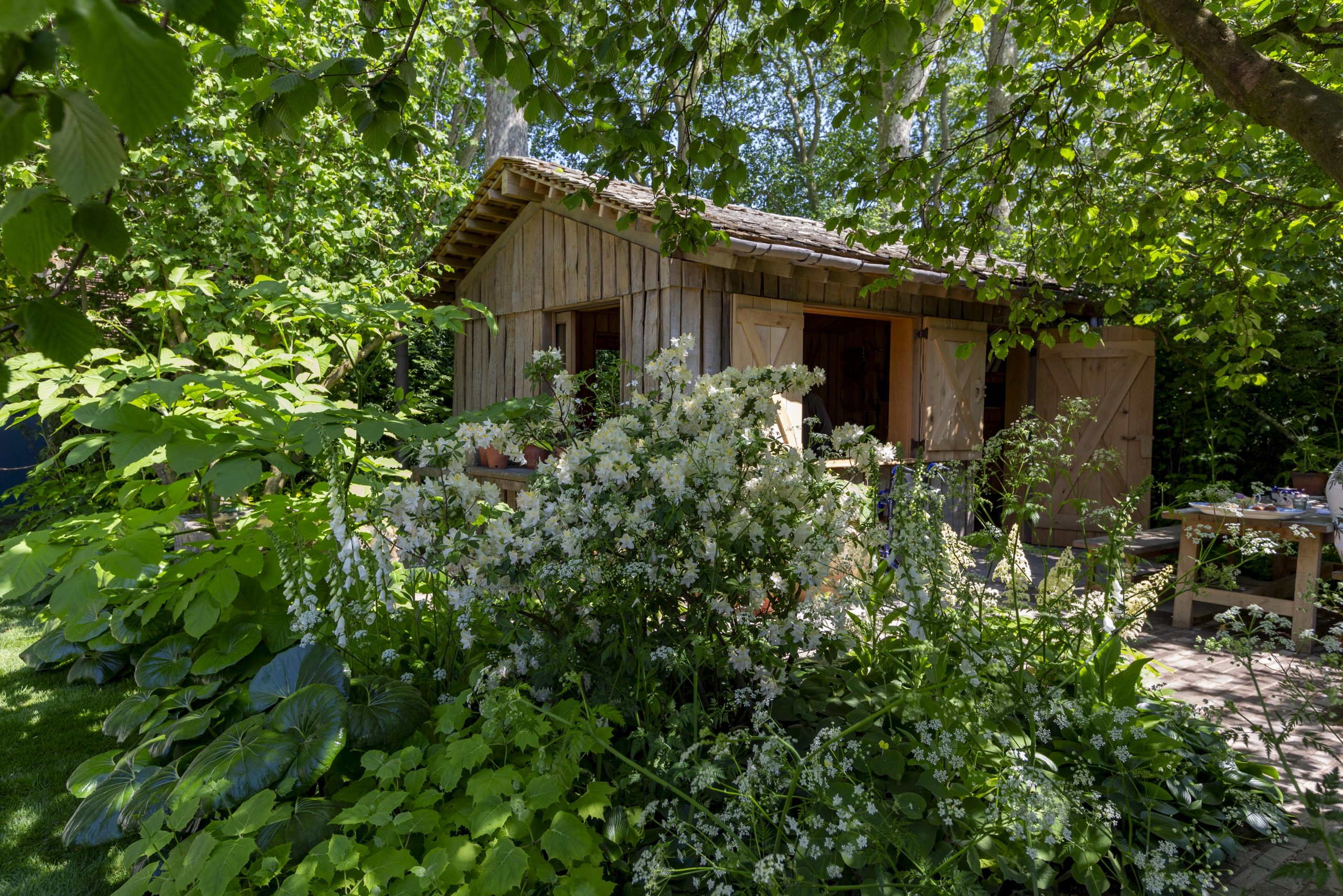
The 2024 RHS Chelsea Flower Show witnessed the return of garden designer Tom Stuart-Smith with his first show garden in 14 years. A Gold medallist eight times and winner of three Bests in Show, he was drawn back by the chance to create a show garden for the National Garden Scheme (NGS), the largely volunteer-run organisation that opens private gardens for charity. Sponsored by Project Giving Back, this is only the second Chelsea garden in the history of the NGS, and occupies the significant corner site on Main Avenue.
From the start of the week on Monday morning, guests milled around this wonderful, natural, fresh space. Judges were also swayed by what has been done here, awarding it a Gold medal; and while it didn’t win Best in Show, many felt it probably should have done.
Mr Stuart-Smith’s design is based on a grove of hazels with spreading boughs and wizened trunks that’s as magical as anything painted by Arthur Rackham. As he says: ‘There’s nothing like a woodland for making you feel that you’re in the cradle of Nature.’
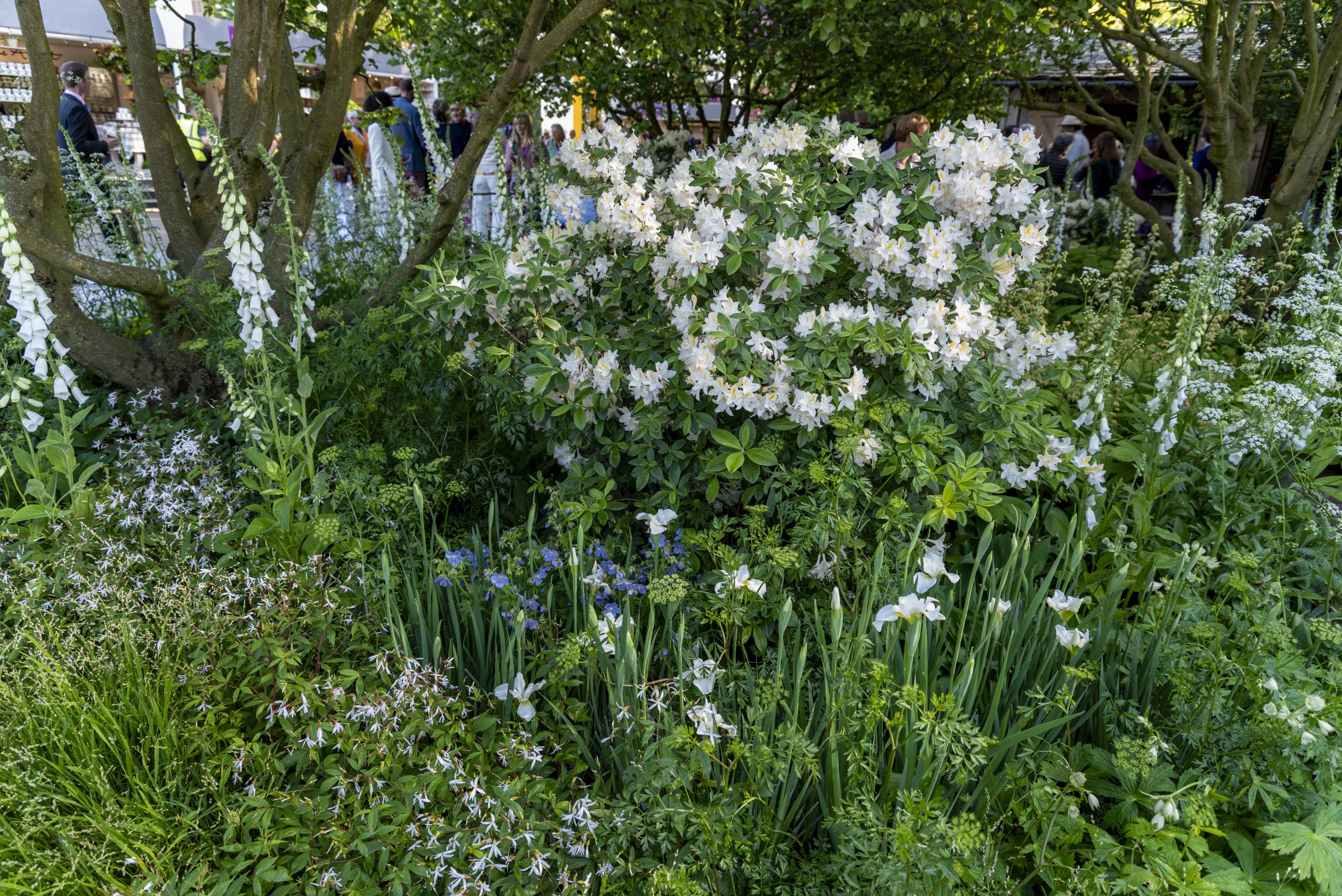
The story this fairytale glade tells about the NGS (which is approaching its centenary in 2027) is one for the 21st century: the rise of the shared, community garden. As most people know, the NGS — founded almost 100 years ago with the support of Country Life, which published the first Yellow Book — offers people, for the price of a ticket, the chance to mooch away a golden afternoon in someone else’s garden, with tea and a hefty slice of Victoria sponge in a summerhouse. Last year, a record £3,403,960 went to the NGS’s mainly nursing beneficiaries.
As long ago as 2016, CEO George Plumptre commissioned The King’s Fund to research the link between gardening and wellbeing. His timing was spot on — that report and a slew of subsequent studies backed the idea that green spaces and fresh air are good for all of us, not only gardeners. A dedicated NGS grant scheme was established to fund community gardens and, last year, £250,000 was awarded to more than 80 projects nationwide. ‘Our community-gardens scheme has reached people that have never heard of the NGS,’ says Mr Plumptre, who is delighted to have extended the charity’s reach to different ethnic groups, to children and to people with disabilities.
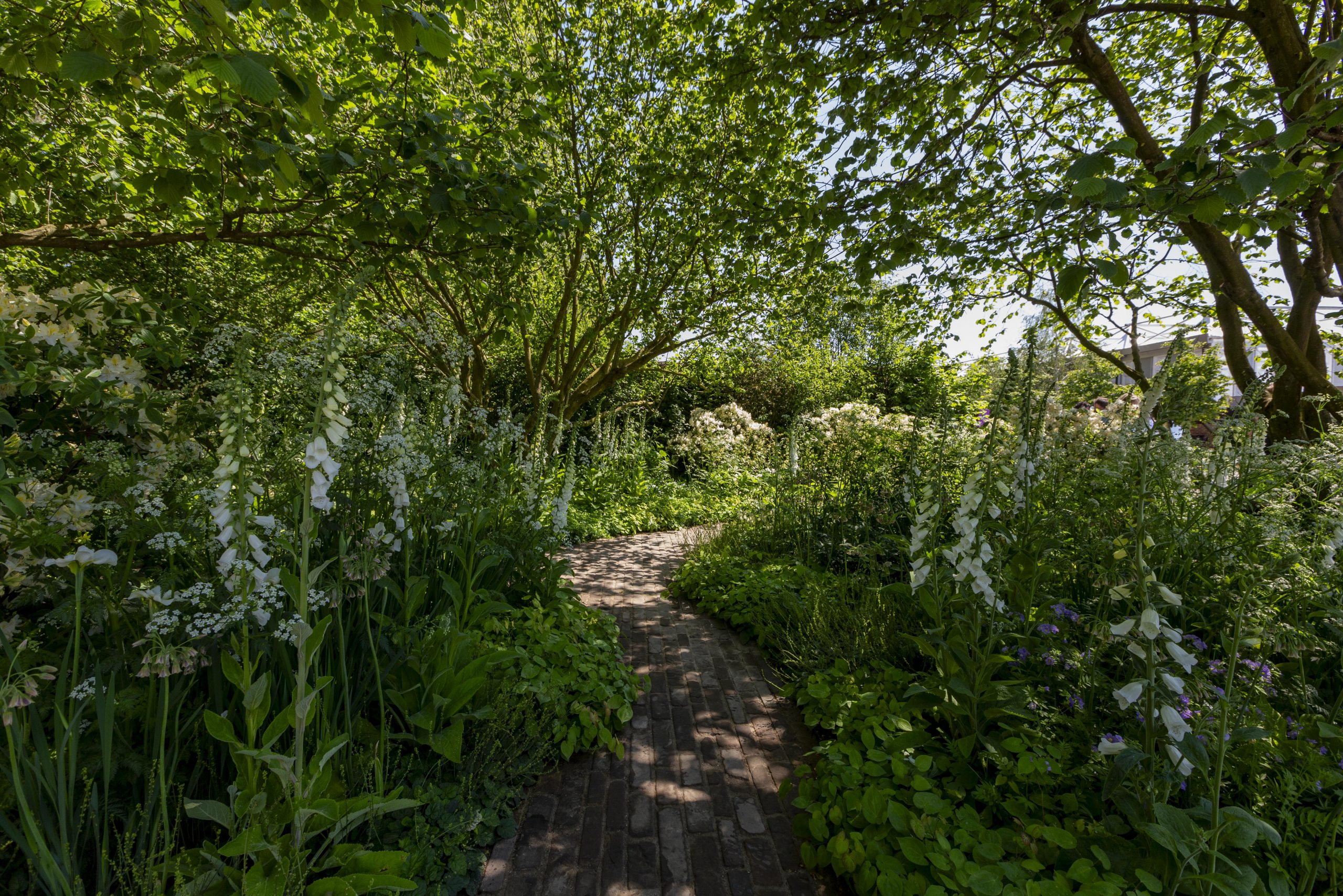
Mr Stuart-Smith, opens his own garden at Serge Hill in Hertfordshire for the 30th year running this spring, is delighted to return to Chelsea with a garden that underpins this new direction. ‘I wasn’t drawn to the idea of a classic English garden with all that baggage,’ he says, but making a community garden presented a far more interesting and worthwhile challenge. ‘For a garden to be looked after communally, you need a big range of plants, which means you can get away from looking after one person’s masterwork to looking after a collection of plants.’
At Chelsea, he describes his creation as a ‘quiet, slow-heartbeat garden. Soft and springlike. It will be… I hope… gimmick-free and not particularly flowery. It is what it is. Breathe in, breathe out’.
Exquisite houses, the beauty of Nature, and how to get the most from your life, straight to your inbox.
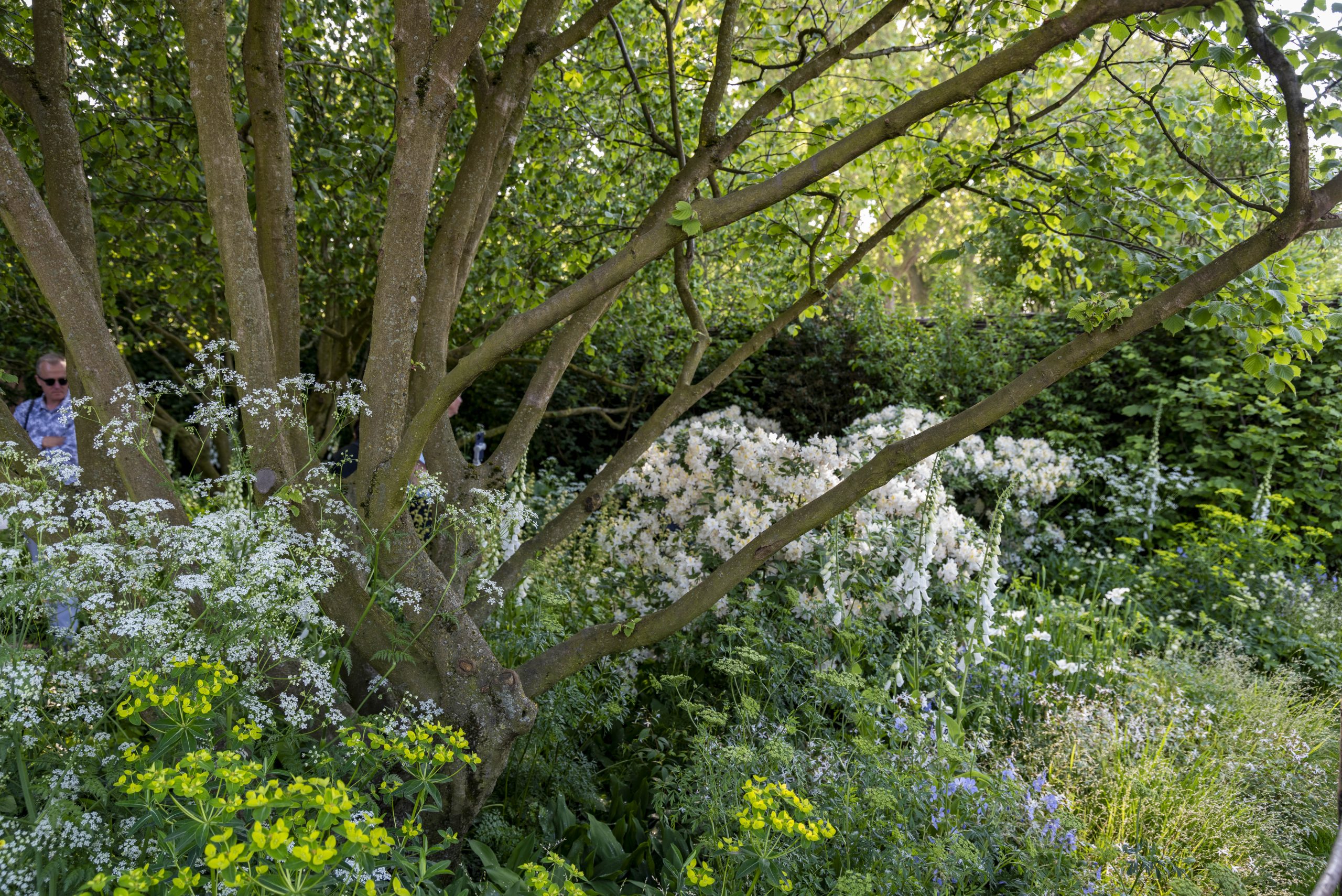
I met him in early March at Crocus Nursery in Windlesham, Surrey, where he was in the process of sourcing the plants and building the garden, and checking over a partial mock-up of the design, looking at tree heights and paths. He explained the essential infrastructure: ‘The hazel grove is a simple beginning and end point that creates the woodland habitat. It’s not a complex canopy, but it allows for a complex herbaceous layer below, tapestry-like and intricate… Having an overarching canopy is important, as it allows you to be in Nature.’
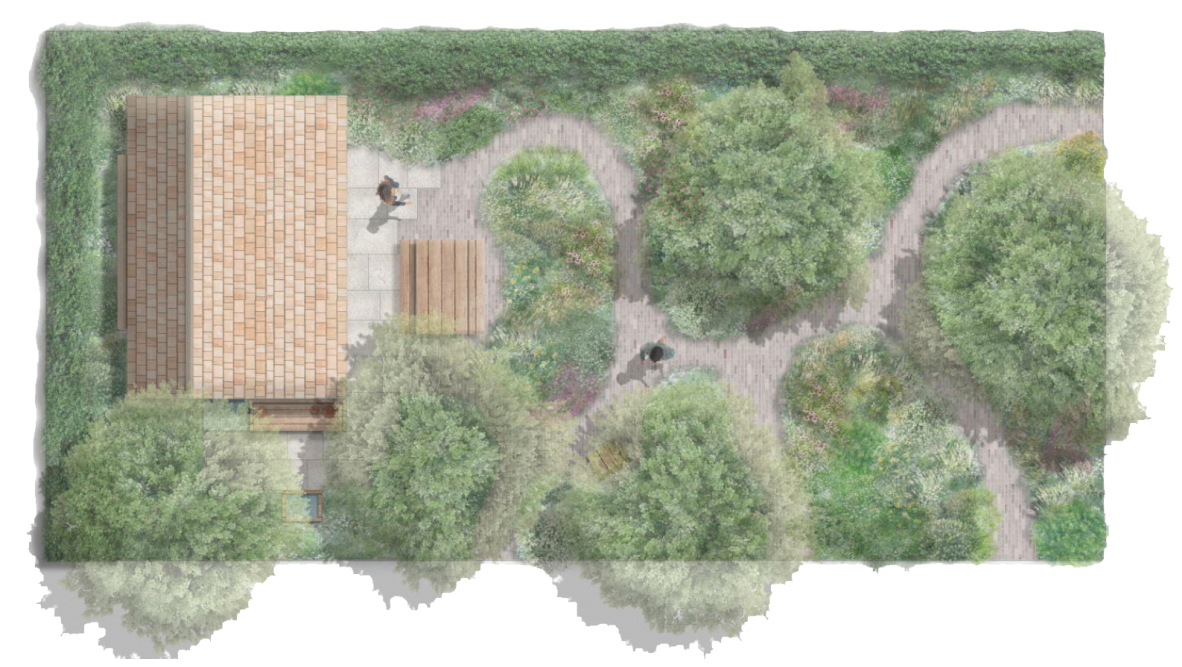
As ever with a Stuart-Smith garden, the ground is blanketed with beautiful, unusual textures and spots of colour that make you look afresh at the most ordinary plants. A group of longstanding NGS garden openers was invited to contribute plants (details below), an imaginative nod to the spirit of the charity.
The volunteers handed over crates of woodland plants in a state of soil-encrusted dormancy that were polished to perfection in the Crocus polytunnels.

As in all the best folk tales, at the end of a winding path, glimpsed through trees, is a mysterious dwelling. Conceived by Mr Stuart-Smith’s son, Ben, an architect, and woodworker Fenton Scott-Fielder, ‘shed’ may be too offhand a term. ‘Über-hut’ is Mr Stuart-Smith’s tongue-in-cheek description of this hand-built, green-oak building, inspired by the old barns and houses. ‘It is a homage to carpentry,’ says his son. ‘We wanted to create a building that is rustic, made from natural materials, using resources at hand.’
Green oak was the economical choice, as it can be worked without a long drying process. The cladding of tile-like pales was achieved by splitting timber along the grain, a traditional technique that leaves the structure stronger. The light, airy interior offers shelter, a store and somewhere to meet up for tea and cake, the ideal retreat for garden volunteers.
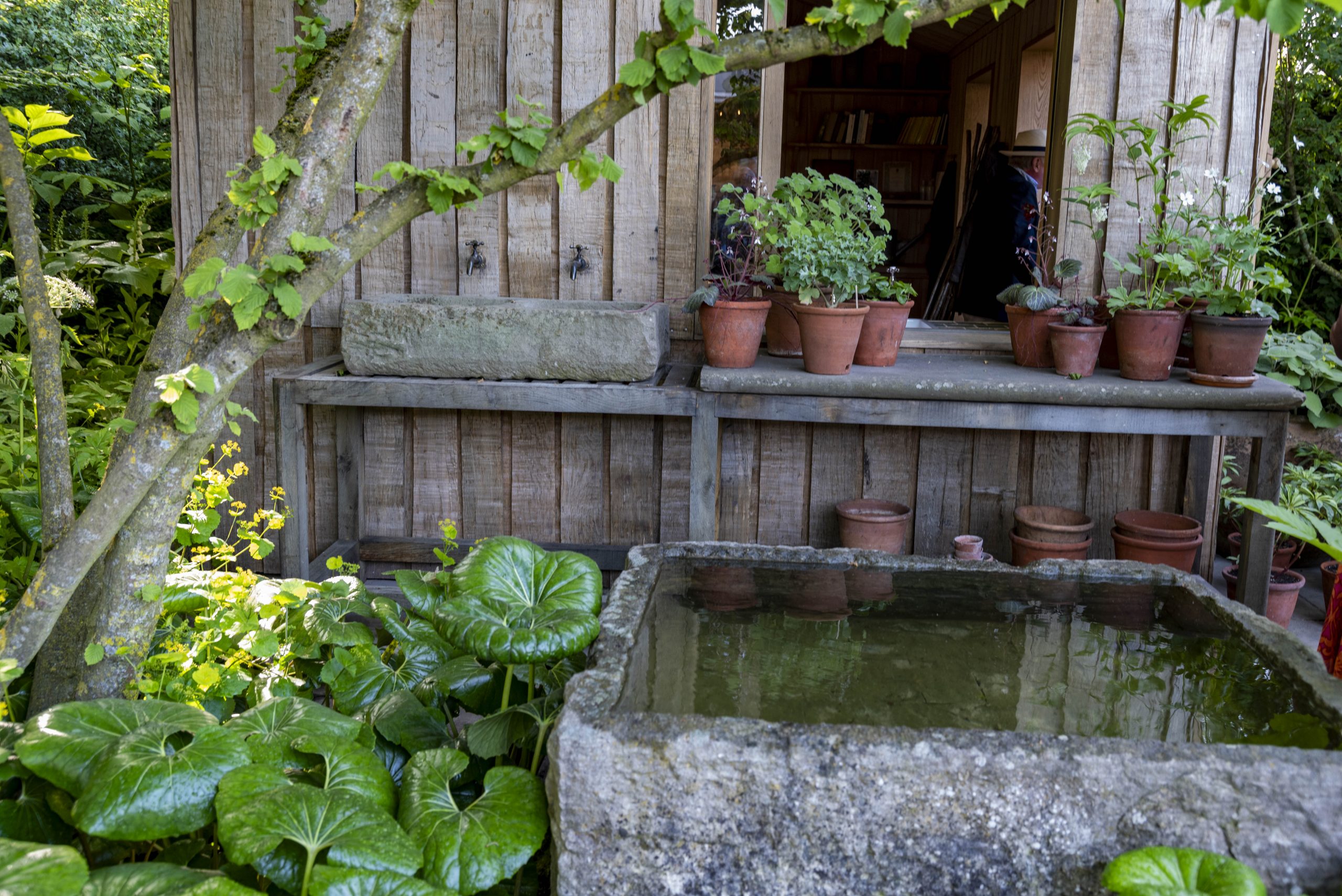
Mr Scott-Fielder had to grapple with the tendency of green oak to shift and settle over time. It takes intuition to manage the material, combined with precision and attention to detail to ensure windows, kitchen units, benches and lockers all fit snugly. The final touch on the exterior is an application of a dilute solution of vinegar and wire wool to give the oak a more weathered appearance.
Although this garden marks a return to Chelsea for Mr Stuart-Smith, it will be his last with long-term collaborators Peter Clay and Mark Fane of Crocus. Their withdrawal from Chelsea this year after 24 years means the end of one of the show’s most successful partnerships. With 12 Best in Show medals and 33 Gold, Crocus has set the standard for planting and construction.
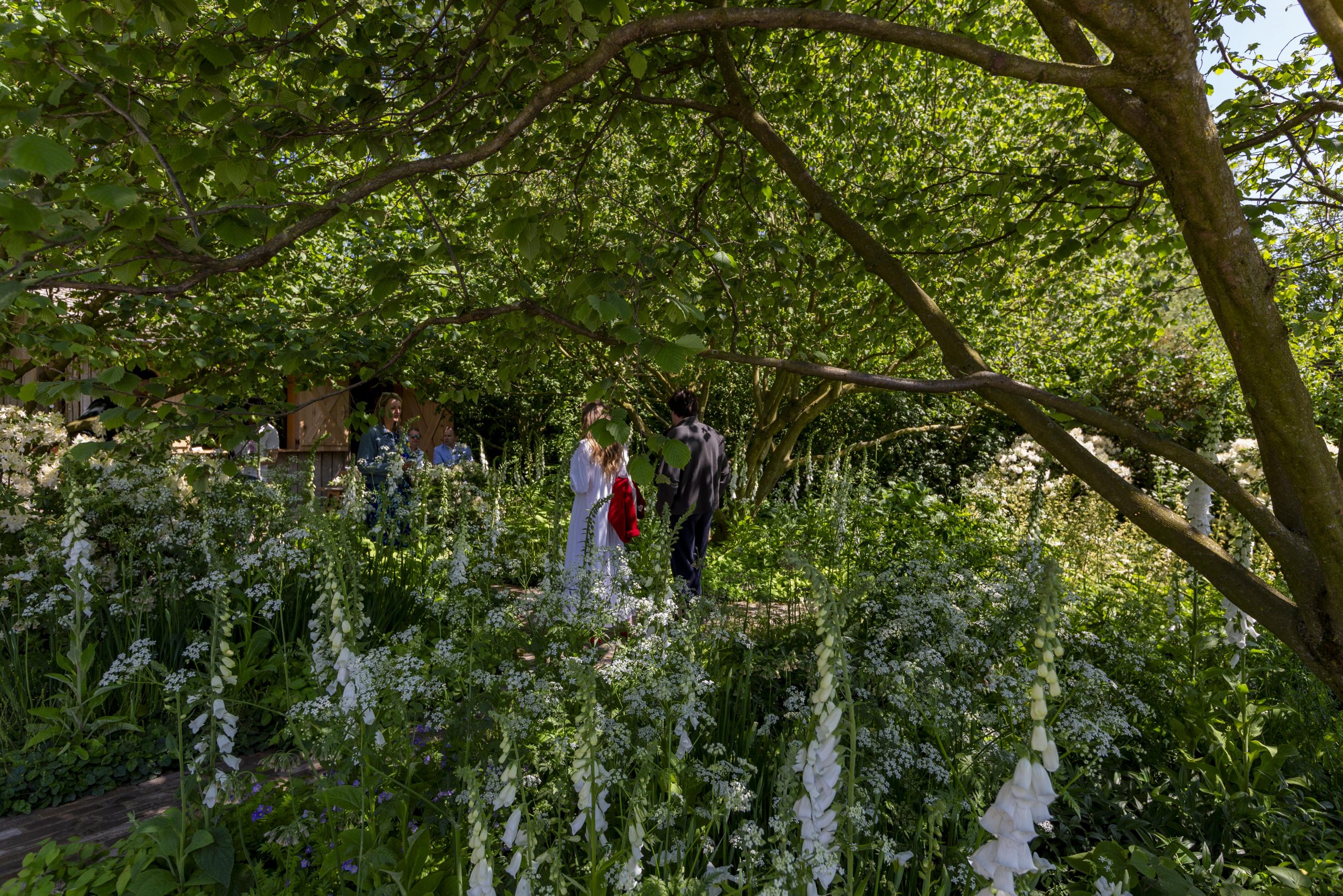
The garden itself will, however, live on in the re-born Maggie’s Cambridge. A woodland-edge patch of ground is waiting to be transformed into a therapeutic outdoor sanctuary, where cancer patients and their families can spend a moment together. Breathe in, breathe out.
F or open gardens, including Tom Stuart-Smith’s Serge Hill, Hertfordshire, which opens on June 2, and the NGS Chelsea Plant Fair at Chilworth Manor, Surrey, on June 1, visit www.ngs.org.uk
Who grew what: The plants grown by some of the many NGS volunteers for Tom Stuart-Smith’s 2024 RHS Chelsea garden
Griselda Kerr of The Dower House, Melbourne, Derbyshire Lamprocapnos spectabilis ‘Alba’ (white bleeding heart)
‘This plant doesn’t like too much competition, so plant it deep and give it plenty of root space to spread out. I grow it next to Solomon’s Seal. When established, it’s quite difficult to dig up. Divide plants in March and, when the leaves turn yellow (usually by July), cut them down and mulch with leafmould.’
Philippa Burrough, Ulting Wick, Essex Cenolophium denudatum (Baltic parsley)
‘This is a self-sower from my garden, I literally just pulled up the plants. I like to structure the front beds around it, as I love feathery foliage and this naturalises, so I let it go. It will find any logical gap. It is also drought tolerant and, unlike a lot of umbels, a perennial, which is useful.’
Chipps Mann, Oxleaze Farm, Gloucestershire Digitalis purpurea f. albiflora (white foxglove) and Iris sibirica ‘Caesar’s Brother’
‘White foxgloves are magical in summer with a full moon. I try not to let purple foxgloves into the garden. To weed them out, look for a purple smudge at the base of the leaf where it joins the stem: it means it’s a purple one.
‘The iris is very easy, it likes a damp spot, increases readily and makes a good vertical accent. The centre goes woody after a while, so, in a perfect world, divide it every three years. Take off the outside bits and replant the centre in good humus-y soil.’

Credit: Strutt and Parker
A gorgeous farmhouse next door to Stonehenge with a gardens by an iconic Chelsea gold medal winner
at Moor Hatches, while away the hours fishing on the Avon, enjoying the amazing gardens, or exploring this seven bedroom
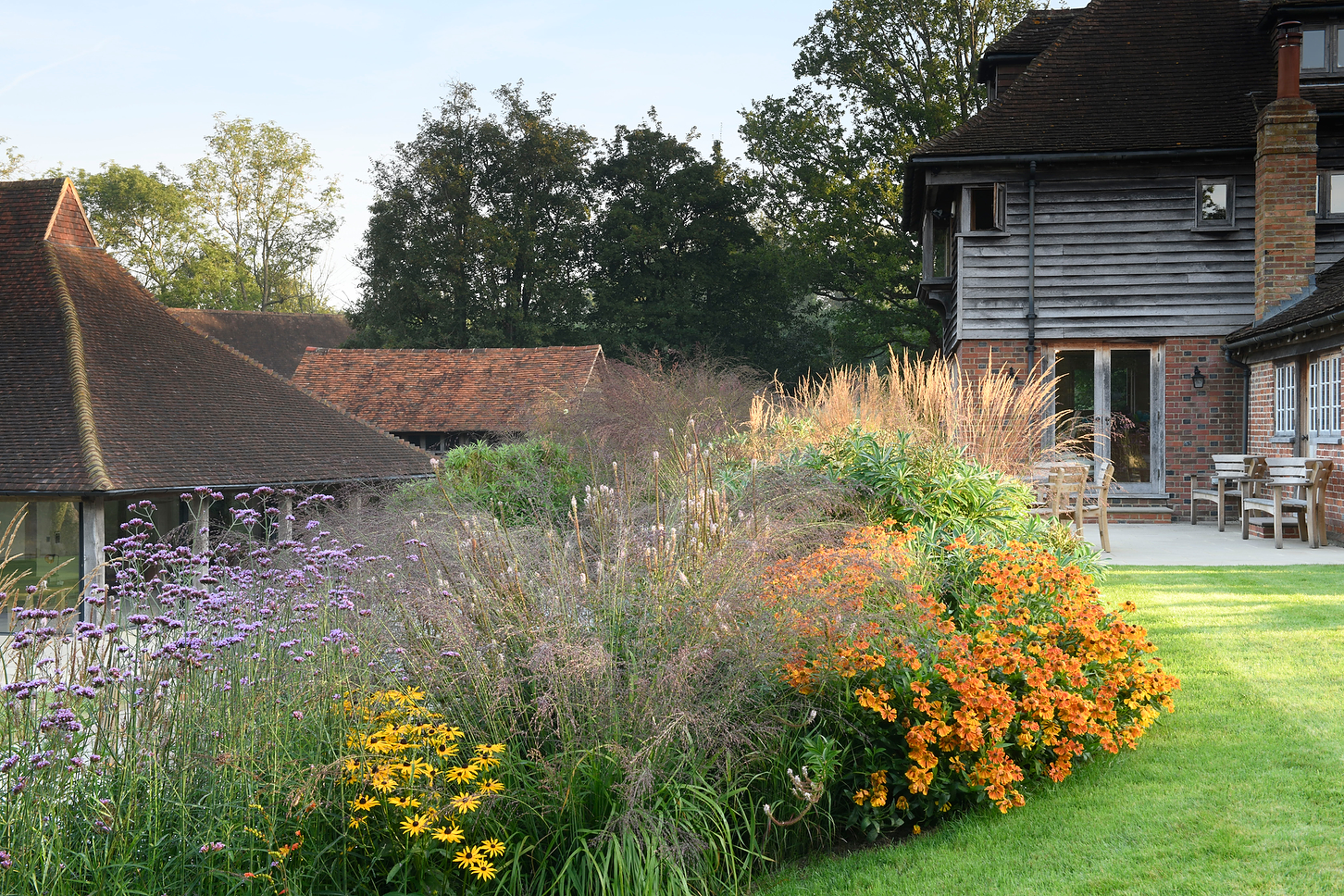
The best garden designers and landscapers in Britain
A beautiful country house is as much about its surroundings as its bricks and mortar, something that the best garden
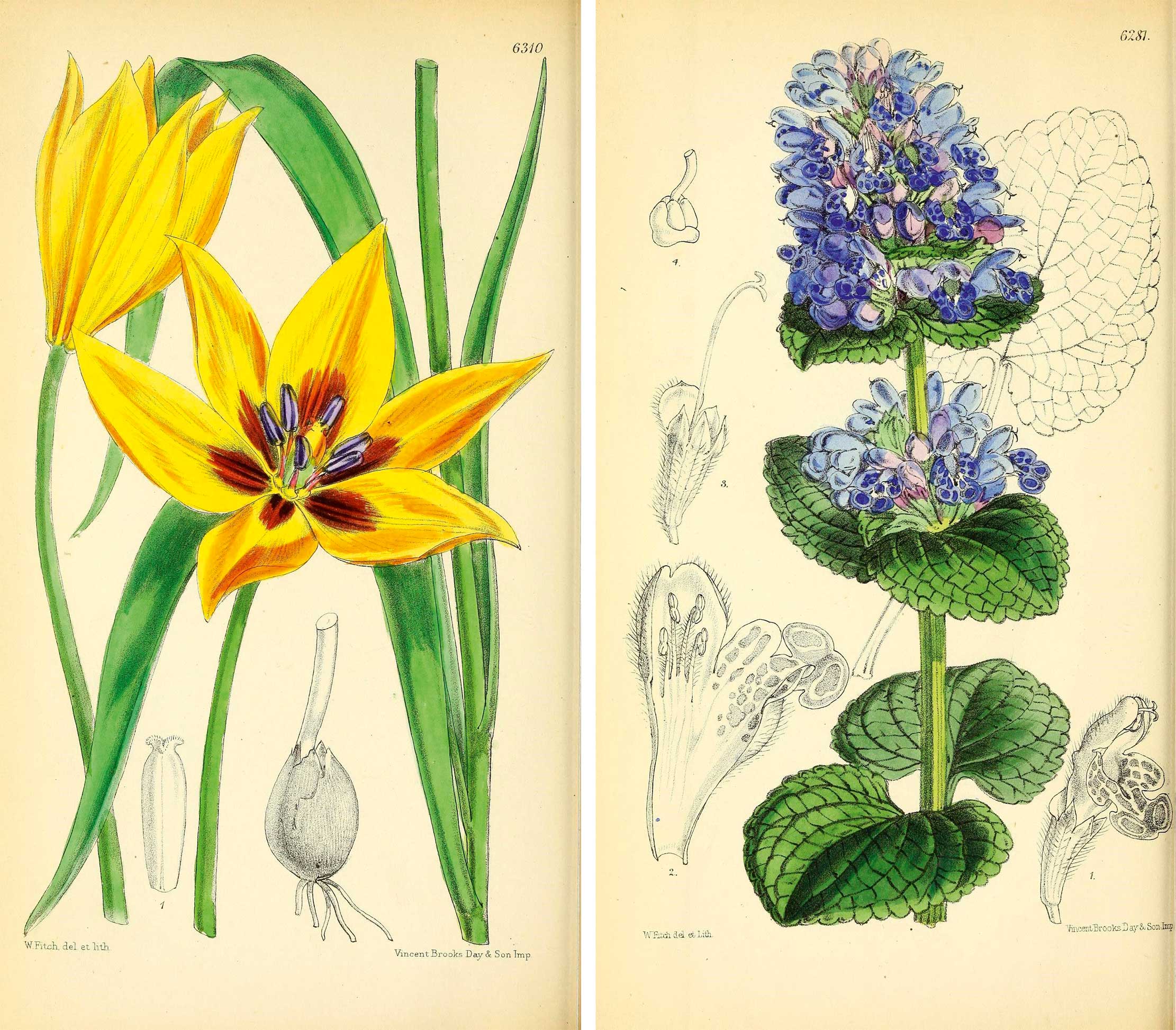
Alan Titchmarsh: The best gardening books in my library of 5,000 volumes
The best of Alan Titchmarsh's gardening books have helped shape his career — he takes a look at some very special
Country Life is unlike any other magazine: the only glossy weekly on the newsstand and the only magazine that has been guest-edited by His Majesty The King not once, but twice. It is a celebration of modern rural life and all its diverse joys and pleasures — that was first published in Queen Victoria's Diamond Jubilee year. Our eclectic mixture of witty and informative content — from the most up-to-date property news and commentary and a coveted glimpse inside some of the UK's best houses and gardens, to gardening, the arts and interior design, written by experts in their field — still cannot be found in print or online, anywhere else.
